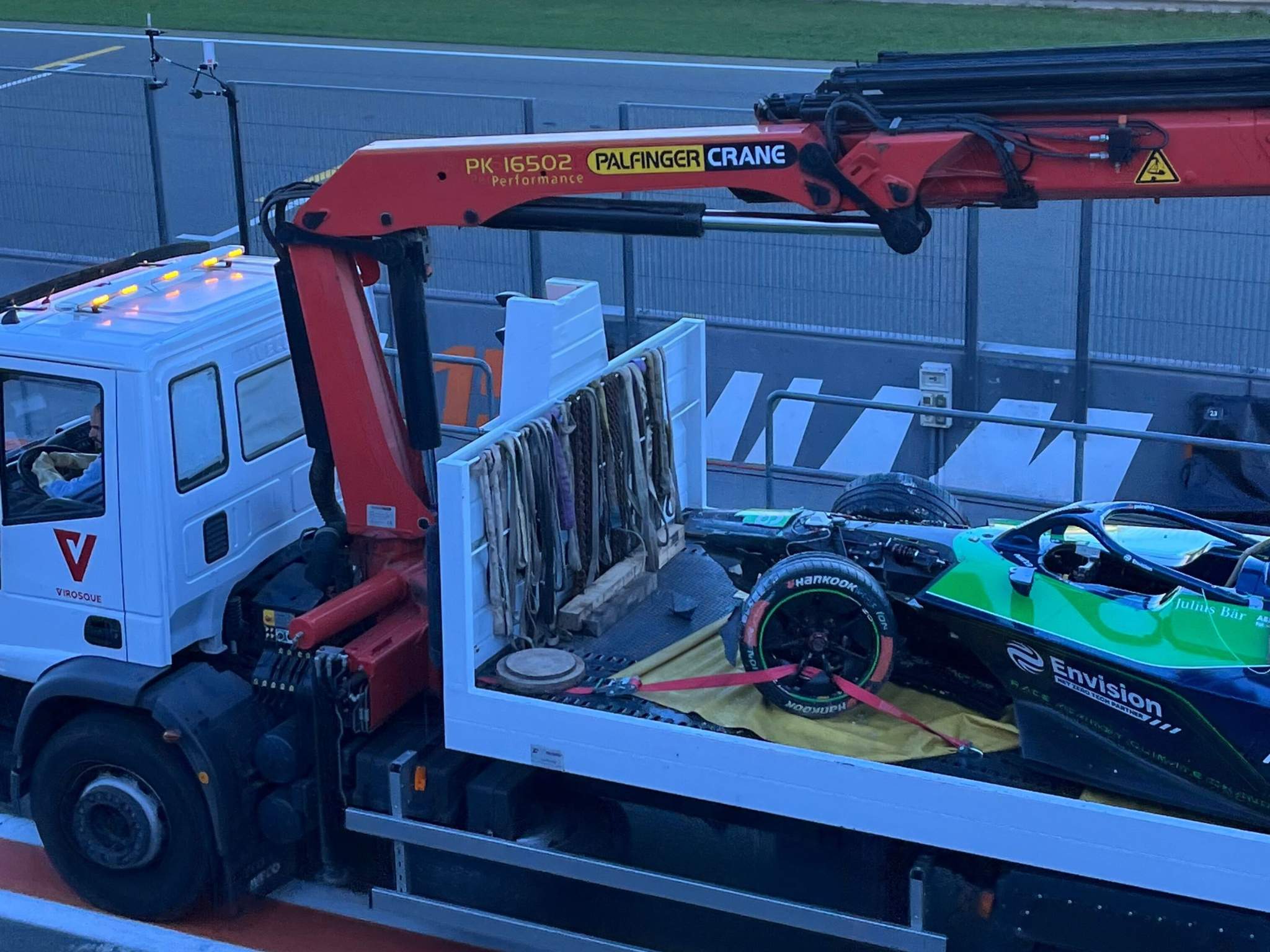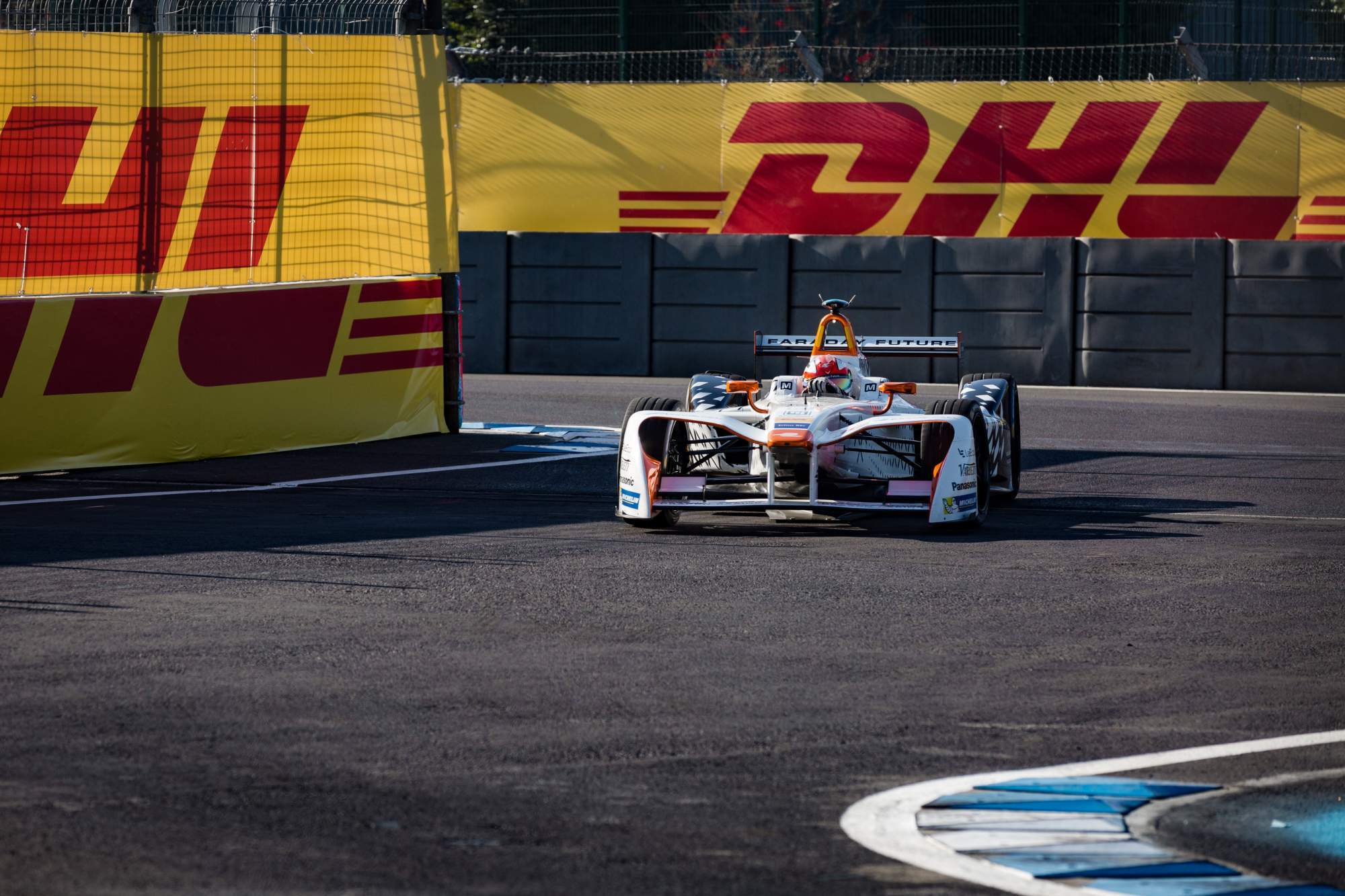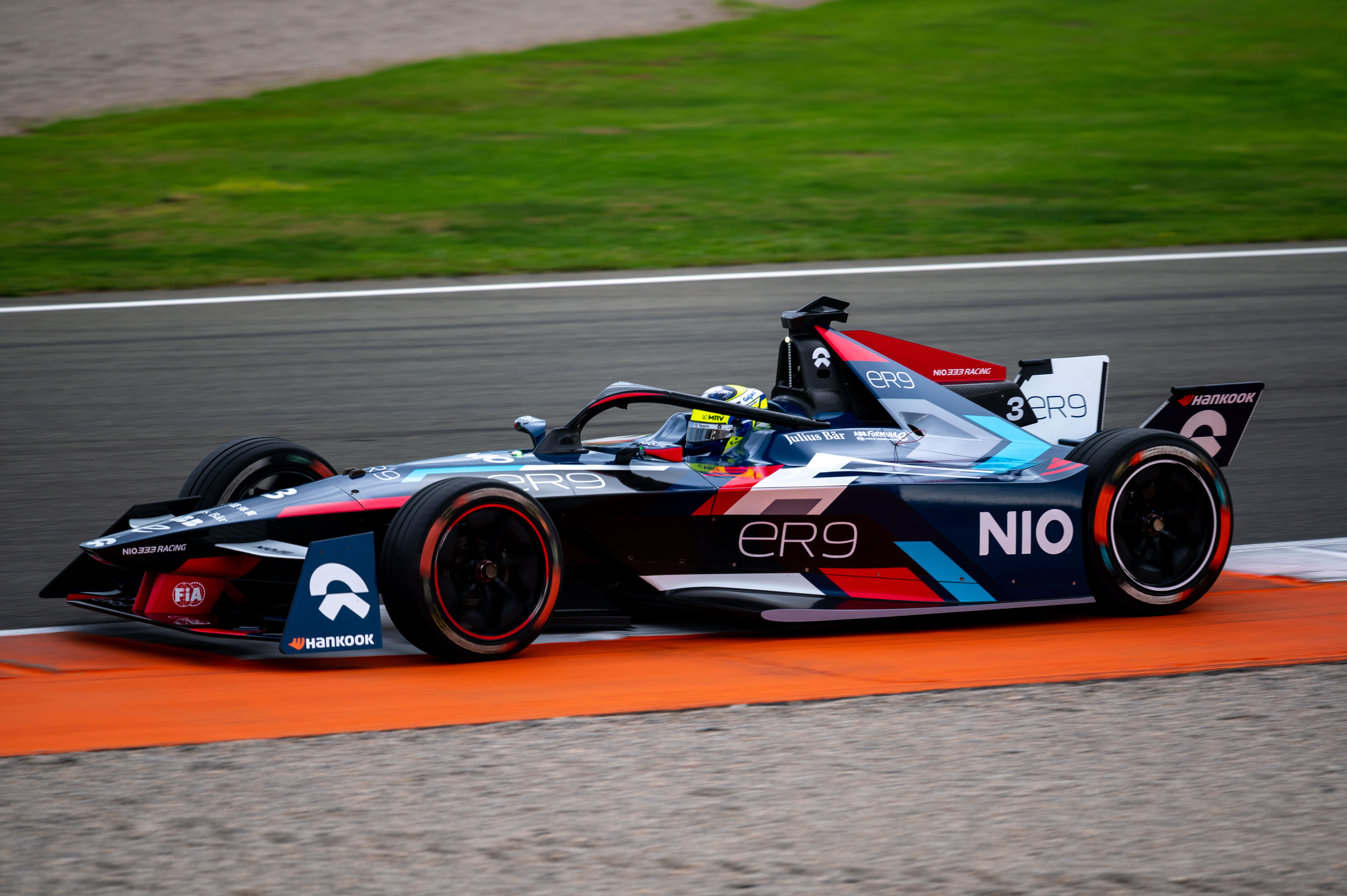until Abu Dhabi Autonomous Racing League

The FIA is aiming to fast-track a secondary brake system to use in emergencies for the Diriyah E-Prix races at the end of January.
Further concern was expressed about being able to adequately stop cars in the event of a powertrain or RESS shutdown because the Gen3 design only has conventional friction brakes at the front of the car that work alongside electronic brakes (brake-by-wire).
The FIA confirmed to The Race in November that a secondary brake method was being looked at but that its implementation could take as long as until March to be readied.
Extra pressure to expedite the plans was exerted after Sebastien Buemi crashed on the final day of the Valencia test last month and cracked the monocoque of his Jaguar-powered Envision car.
Now, The Race can reveal that the system’s concept will incorporate a solenoid that the driver will open via the brakes on the front axle, which will connect directly to the rear in order to provide a quicker method of stopping the car in the event of a complete system shutdown.
The FIA issued a statement to The Race this week confirming the plans. It read: “We are doing our best to implement the secondary brake system from Diriyah onwards despite global supply chain challenges”.
Part of the solution will take into account the policing of the system so that it can’t be used for any other reason than an emergency stop via the activation.

It is understood that several drivers lobbied Formula E and the FIA to accelerate the implementation of the brake to ensure their added safety.
Formula E has a circuit-specific advisory group that has several driver representatives. These have been Lucas di Grassi, Jean-Eric Vergne and Oliver Rowland in the past but could be rotated to include others in 2023. These drivers input into meetings addressing such matters as track limits, kerbs and track signals.
Specific safety elements are managed by the FIA as a matter of course and although it is believed to occasionally seek counsel from drivers there is no formal safety group for races.
The opening round at the Circuit Hermanos Rodriguez this weekend, the first for Gen3 cars, will feature some increased safety provisions in response to the quicker straightline speeds reached by the new cars.
More Tecpro barriers are being readied in some key areas of the track. Simulation results of the new car specs via official FIA safety guidelines have triggered the extra barriers at the circuit.
A new chicane has also been added to the regular 2.6-mile circuit that was used for the first time in 2020 and again last year. Prior to that between 2017 and 2019 a chicane was installed between what were then Turns 3 and 6 on a track which didn’t feature the Turn 3 to Turn 7 loop.

The reprising of the chicane for this Saturday’s race is not a response to the spate of incidents that have occurred in testing but rather an addition for what the FIA described to The Race as “energy management purposes” with the extra regeneration opportunity the chicane presents.
This will also make comparisons between the Gen2 and Gen3 impossible for the first race of the new era.
It remains unclear if any extra barriers will be at the first turn and Turn 12.
Daniel Abt crashed his Audi and was briefly hospitalised at Turn 12 in free practice after a braking episode in 2020, while Nyck de Vries had a similar but smaller-scale incident in the race at Turn 1 after a similar problem.
Talking to The Race at the Valencia test last month several drivers expressed concern on the nature of the Gen3 cars without an emergency stop mechanism.
NIO 333’s Sergio Sette Camara said that he “trusts the championship” and that the Gen3 cars were “very robust and they can take a hit, but as a driver, you don’t like not having rear brakes”.
“I understand where they are; they want to push new technologies and maybe in a few years’ time cars won’t have any mechanical brakes, maybe it is part of the future,” added Sete Camara.
“If really the argument for not having it is just a weight reduction, is it really worth it? Why don’t we just put the brakes, wait this four-year cycle, see if we ever need to activate those brakes?
“So, it is always this balance between being innovative, pushing boundaries and being safe.”

The returning Norman Nato said that although he only has one season of Formula E experience it was “true that sometimes I would say that we should all sit down together around the table, because at the end we are the ones who driving the car”.
“The FIA, they have in terms of safety some rules to respect, and Formula E want to create a show, and us drivers, at the end, need to drive the car to be as fast as possible. Sometimes, what I think we could do better, is maybe to work a bit more together,” added the new Nissan driver.
“But again, I’m not the one who’s going to make a change. I think we have guys like Lucas and Jean-Eric, some of these guys have raced in Formula E for many years. These guys, maybe, can speak for all the drivers.”



